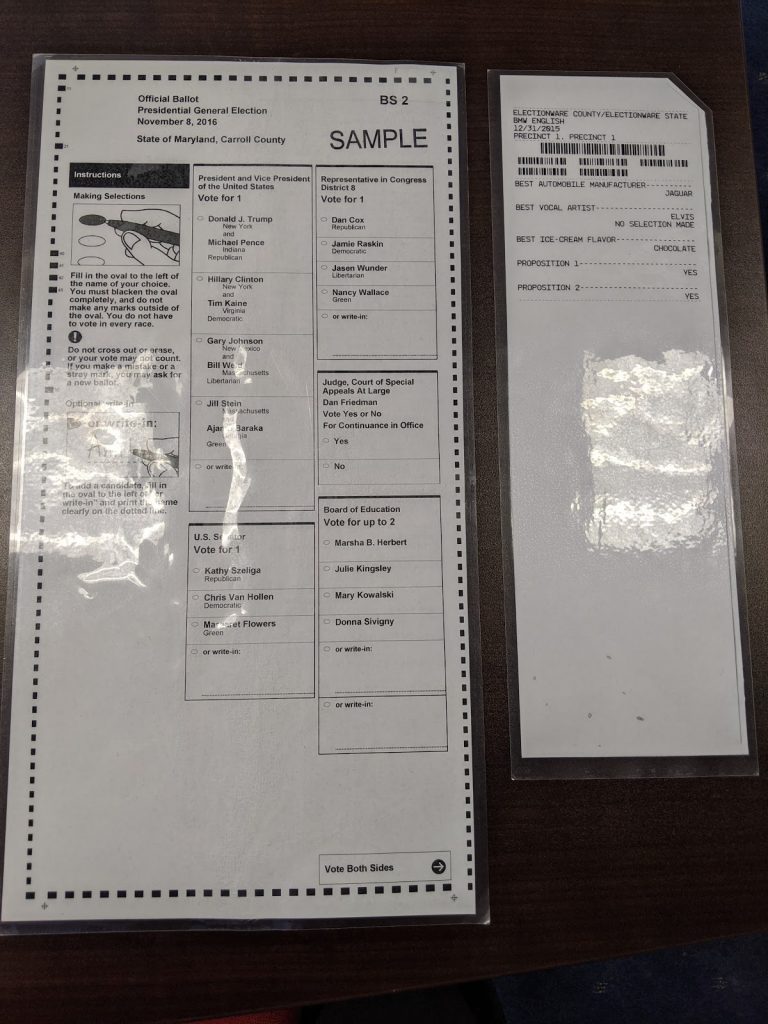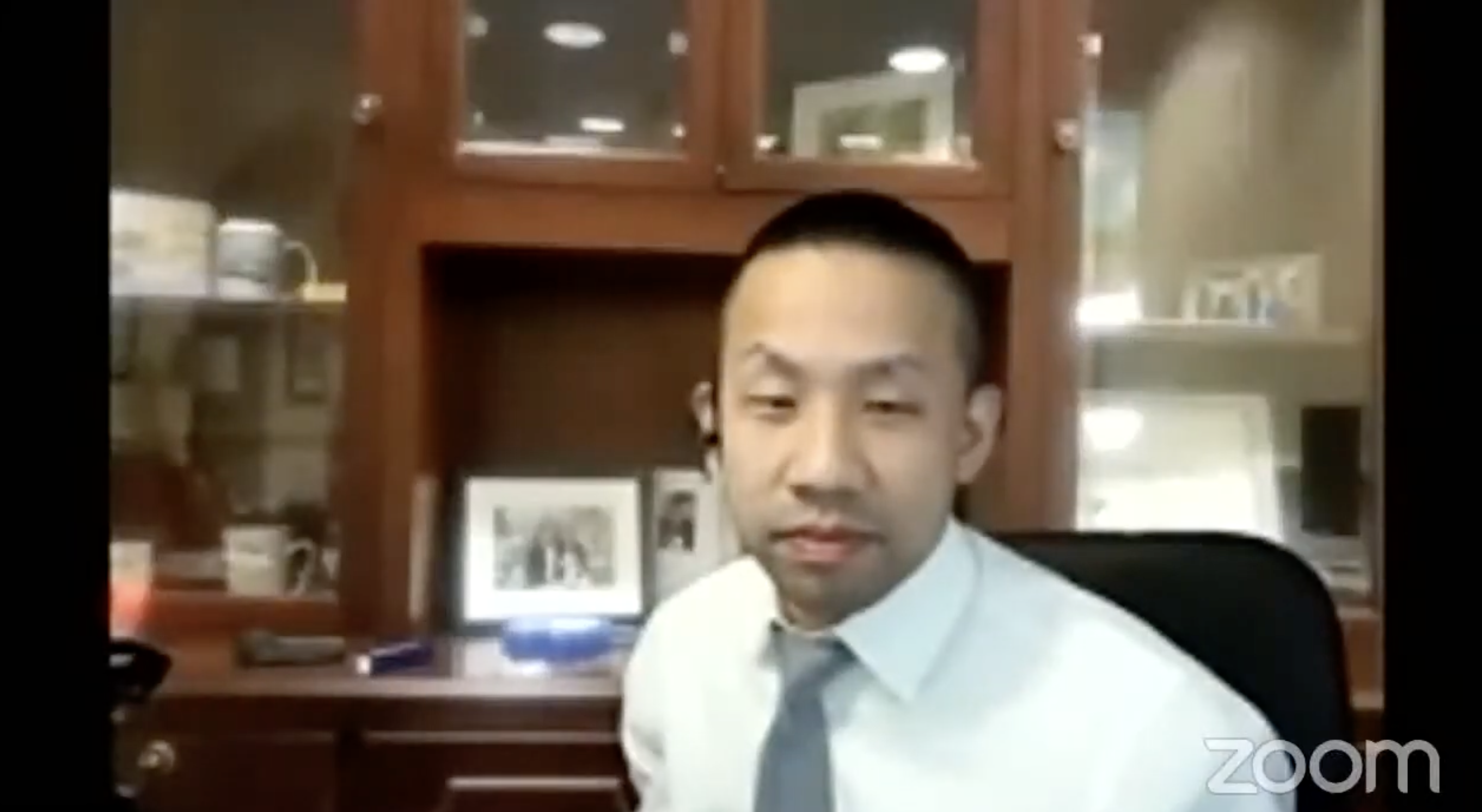Lawmakers in Maryland are working to enact legislation that would greatly improve accessibility for disabled voters.
One of the more notable bills would change the state’s entire voting system.
SB0271/HB0423, sponsored by Sen. Clarence Lam, D-Baltimore County and Howard, and Del. Jessica Feldmark, D-Baltimore County and Howard, respectively, would require that all Maryland voters use a uniformly accessible device to cast their votes.
During the bill’s hearing in the Senate Education, Health, and Environmental Affairs Committee on Feb. 18, Lam testified that the separate voting methods provided for disabled and non-disabled citizens in the current system have created anonymity issues for individuals in the disabled community.
“In Maryland, we are forcing members of a protected class to vote using a different system than other voter(s),” Lam told Capital News Service in an email.
Maryland currently employs a hand-marked bubble-fill ballot casting system, but those who cannot independently fill out paper ballots use electronic ballot marking devices instead.
“The ballot marking devices used in Maryland generate a ballot that is significantly different in size and form from the ballot used by the general public,” Lam testified. “Therefore, the votes of voters with disabilities are in a way being denied voting privacy and the right to cast a secret ballot, one that’s not distinguishable from others.”
Starting in 2004, Maryland had a standardized system for its citizens to vote—Diebold AccuVote direct recording electronic machines—until the General Assembly switched the state back to paper ballots—a move that didn’t take effect until 2016—and gave disabled voters ExpressVote ballot marking devices as an alternative, according to a 2019 article published by University of Maryland information studies professor and incoming director of the Trace Research and Development Center, Jonathan Lazar, in the Election Law Journal.
The change was made to increase election security and prevent any cyber threats made possible by the fully electronic system.
“They (the ballot marking devices) can read the ballots using headphones, can magnify the print, and use a keypad or touchscreen device as an input mechanism,” Lam testified. “The machine then records the voter’s selections on a paper ballot that is still inserted into a tabulating scanner.”
“The machine does not tabulate, catalog, store or in any way cast the selections marked on the devices, it simply marks them on the paper ballot inserted into the machine. This ballot can then be scanned like the other standard bubble sheets that are placed in the system by other voters,” Lam added.
However, there are issues related to the machines.
Ronza Othman, president of the National Federation of the Blind of Maryland, an affiliate of the larger National Federation of the Blind, testified about her own experiences, describing one incident in 2020 where she arrived at a location to find the machine not set up.
Not only did she have to set the machine up herself, but she also had to teach the center’s staff how, as they had not been trained. Othman added that she was also not initially offered the ballot marking device as is required, but had to request it, even though, as she described in her testimony, she is “very clearly, very obviously blind.”
Othman said that she has heard from multiple people inside and out of her organization who have faced similar challenges.
Additionally, the slips produced by the devices are noticeably different in size from the bubble-fill ballots, creating a “segregated ballot,” easily differentiating the votes cast by disabled individuals from those who are not.

To correct the issue, the Attorney General recommended that a “substantial majority” of people using the machines be nondisabled voters, Lam testified, however, the State Board of Elections had initially only required two individuals to use them at each site.
The National Federation of the Blind filed a lawsuit in 2019 against the elections board for violating the Americans with Disabilities Act and the Rehabilitation Act of 1973 by “maintaining a segregated system of voting,” according to a press release put out by the federation.
Because of the lawsuit, the elections board amended their policy to five voters per location, Lam added. The suit is ongoing.
According to data received by Lam’s office from the State Board of Elections, 160 precincts throughout 16 of Maryland’s 24 counties failed to hit this requirement in the most recent general election.
“They haven’t been able to meet that policy that they established,” Othman said. “They also claim that there will be a neutral instruction given when people come to their polling location that lets them decide whether to use the ballot marking device or its paper ballot, but our experience is that they haven’t followed that.”
SB0271 would not make ExpressVote the statewide system, however it would require the Board of Elections to decide on a ballot marking device that all would use.
According to state legislative analysis, on top of state fees, local governments would have to pay collectively around $5 million annually if the bill were enacted.
Some opposition was brought against the bill both due to continued concerns about the safety of an all-electronic system and because of its large financial impact.
J. Alex Halderman, a computer science and engineering professor at the University of Michigan as well as co-chair of Michigan’s Election Security Advisory Commission, testified in opposition due to research he had done regarding the hackability of electronic ballot marking devices.
Halderman said that someone who hacked the machines could change the responses on a voter’s printout, which not enough people look closely at to notice—Halderman testified that during a research experiment, “voters noticed less than 7% of the votes we changed.”
He added that the safety of the devices was easier to guarantee with fewer people using them, but could not promise the same assurance when protecting the votes of an entire state.
Kevin Kinnally, the legislative director of the Maryland Association of Counties, testified unfavorably on behalf of the association due to its high financial toll.
While they agree with the bill’s goals, Kinnally said that the association cannot support the cost, though they would be open to discussing more reasonable ways to fix the issue.
Many senators also agreed to wanting to resolve the problem, but too were unsure if this bill was the right way to do so.
Suggestions that were given included mandating that a much larger number of voters use the ballot marking devices and changing the physical look of both types of ballots.
Lam and Othman both said they were open to alternatives.
Othman said an amendment was even in the works that would change the requested number of users, saying that they were “shifting from 100% to a significant percentage, which we are working out with our bill sponsors.”
“I’m really sad that we’ve come to this point that…we’re willing to compromise on the integrity of the voting system,” she added, “but it has been such a dismal experience for so many, and so disenfranchising for us and our communities that we are willing to compromise and accept less than 100% or the vast even majority of people using the BMDs.”
No vote has been set for either SB0271 or HB0423.
Other legislation aimed at helping disabled voters include:
HB0245, which would require that election judge training materials include instruction on ways to “assist or accommodate elderly and disabled voters in voting.”
It would also require the elections board to put up particular accommodation signage at polling places. This bill awaits a committee vote.
HB0247, like HB0245, would require similar election judge training materials for those “in need of assistance,” and that they similarly be available at polling sites. It passed in the House unanimously last month.
It would also require, however, that a chief election judge give “voting order priority to certain individuals.”
HB0493 would require that, in counties with “fixed–route public transportation services,” ballot drop-boxes be placed at public transportation stations or stops, no more than 500 feet away, and easily accessible to individuals with disabilities. It, too, awaits a committee vote.
“Fair and secret elections are integral to democracy and it is imperative that all voters have the ability to participate,” Lam wrote.


You must be logged in to post a comment.